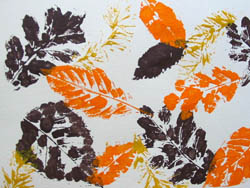Hi,
This Kids Science Newsletter includes a question of the month, current science events, science trivia and a simple science experiment.
Question of the Month
How much oil enters and pollutes our oceans each year?
(answer follows the simple science experiment)
Science Current Events
- Tornadoes Still Striking US as Hurricane Season Begins
- As of June 1, 2011 there have been 1448 tornadoes reported. Scientists have confirmed there were 1007. The deadly outbreaks have killed almost as many people this year as died from tornado related deaths in the previous 10 years. This comes as the hurricane season officially began on June 1st. scientists predict that this will be an above average hurricane season and at least one major hurricane will strike the US mainland. Let us hope that their predictions turn out to be wrong.
- King Cobras Riding the Trains
- A train conductor on a Vietnamese train between Ho Chin Minh City and Hanoi descovered four sacks of King Cobra snakes. The highly venomous snakes were being taken illegally by train to restaurants. The King Cobra snakes had their mouths sewed together but were moving around in the sacks on the train when the conductor found the bags. The snakes are protected by law, but snake meat is considered a delicacy by Vietnamese. Snake meat is often on restaurant menus. The snakes mouth's were unsewn and they were freed in the countryside.
- Super Typhoon Songda
- Songda became a super typhoon, which is a Category 5 hurricane off the coast of the Philippine Islands. As it moved north the typhoon turned into a Category 4 storm. As it approached Japan the storm cbecame a tropical storm that brought large amounts of rain to this earthquake ravaged region.
- White Nose Syndrome in Maine Bats
- The fungul disease that started in New York has now spread to Maine. The disease keeps bats from hibernating in the winter. The bats instead stay awake and cannot find enough insects to keep them alive during the winter. Bats are important for controlling mosquito populations and eating other insects. Scientists predict that some bat species will become extinct within 15 years in the northeast part of the United States. Bats are important polinators and mosquito populations could soar if this happens.
Science Trivia
- Baby rattlesnakes are born without rattles. They have a prebutton that is lost when they shed their skin the first time. The end of their tail forms a new segment. It takes two or more segments for rattlesnakes to have rattles. They shed their skin from one to four times each year increasing the number of rattles on the end of their tail
- A golden poison dart frog contains enough toxin in its skin to kill up to 100 people.
- Did you know that if you lived on Mercury each day would be longer that the year. A day is the amount of time it takes Mercury to turn on its axis. (176 Earth days) The year is the length of time it takes Mercury to go around the Sun. (87.97 Earth days)
- You use 72 different muscles when you talk.
- If you are near a beach and see a jellyfish remember that they can sting even when they are dead.
- When candy canes were first made they did not have stripes.
- There are several species of fish that can come out of water and travel across the land. The eel catfish in African swamps comes on land to hunt beetles.
- The Milky Way, which is a spiral or barred spiral galaxy, contains between 100 and 400 billion stars.
Simple Science Experiment
Leaf Placemat
Introduction
In this fun activity you will be making placemats using fresh leaves off of trees and bushes to make placemats you can use this summer.

Materials
- 12x18 inch sheets of construction paper for each placemat
- variety of leaves
- Paint, various colors
- Paint brush
- Clear contact paper (optional)
Directions
- Gather your materials for this project before you start including a variety of leaves.
- Arrange the leaves on your placemat so they make an attractive collage.
- After the placemat is designed take the leaves off the paper and set them aside.
- Choose a variety of colors to paint your leaves.
- Paint the bottom side of your first leaf. (The veins of the leaf stick out on the bottom side.)
- Turn the leaf over and press it down on your construction paper.
- Using your fingers smooth over the top of the leaf so the paint is transferred to the paper.
- Repeat this step until you have completed your placemat.
- Let the paint dry thoroughly before covering it with clear contact paper to make a permanent placemat.
Science behind the experiment
Plants in the spring grow leaves to produce their own food. Through the process of photosynthesis they use sunlight for this process.
Answer to the question of the month
How much oil enters and pollutes our oceans each year?
According to a 1995 report by NASA 706 million gallons of oil enters and pollutes our oceans each year. Here is how it breaks down by categories.
- Big spills: 37 million gallons
- Routine maintenance: 137 million gallons
- Down the drain: 363 million gallons
- Up in smoke: 92 million gallons
- Offshore drilling: 15 million gallons
- Natural seeps: 62 million gallons
More Fun and Interesting Web Pages
What is an earthquake?
Science Activity, Big Dipper and Southern Cross
Share the newsletter
Please feel free to share this newsletter with a friend by forwarding it to them. If you know of a group who might enjoy the newsletter please let them know about it also.
Comments? Ideas? Feedback? I'd love to hear from you. Just reply to this Just For Kids Science Newsletter and tell me what you think!
Sincerely yours,
Myrna Martin
Websites:
www.RingofFireScience.com
www.Kids-Fun-Science.com
|



